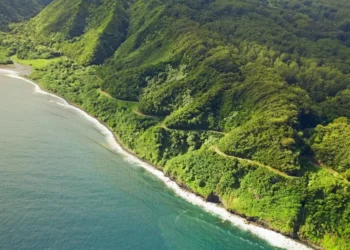Stretched along Florida’s northeastern shore, St. Augustine unfurls as a city steeped in the weight of centuries, its salt-worn streets and stoic forts bearing witness to a past carved by ambition and resilience. Established in 1565 by Spanish explorer Pedro Menéndez de Avilés, it holds the distinction of being the oldest continuously occupied European settlement in the United States—a place where history doesn’t merely linger but strides alongside the present. From the coquina walls of its ancient defenses to the soft crash of Atlantic waves, St. Augustine beckons travelers to step into a narrative that spans empires, woven into the fabric of its oaks and tides.
Notable Insight: The Castillo de San Marcos, forged from coquina—a porous stone of crushed shells—has stood since 1672, its flexible composition absorbing cannon fire rather than shattering, a quiet marvel of endurance that has defied both invaders and time.
Places to Visit: An Overview
St. Augustine’s treasures unfold across its compact yet storied bounds. The Castillo de San Marcos commands the waterfront, its star-shaped silhouette rising over Matanzas Bay. Visitors wander its ramparts, where the boom of reenacted cannon fire punctuates the air, and the view stretches to where sea meets sky. In the city’s core, the Cathedral Basilica of St. Augustine—a Spanish Colonial edifice from 1797—stands as the nation’s oldest Catholic parish, its stained glass and murals glowing with reverence and age.
The St. Augustine Amphitheatre, nestled near Anastasia State Park, offers a modern counterpoint, hosting world-class performances under a canopy of stars—check its upcoming events for a chance to catch a show. For cinematic escapes, Epic Theatres of St. Augustine delivers plush seats and silver-screen tales just beyond the historic district. Along St. George Street, the pulse of the past beats through pedestrian lanes, where the oldest wooden schoolhouse creaks with 18th-century lessons and shops brim with local wares.
How to Reach
St. Augustine rests 40 miles south of Jacksonville, tethered by highways that thread through coastal pines. From Jacksonville International Airport, a rental car traces I-95 and A1A in an hour, the road unfurling past marshes and glimpses of the sea. Shuttles ferry the carless, while Amtrak’s Palatka stop—30 miles west—links to taxis or buses for the final leg. From Orlando, a two-hour drive via I-4 and I-95 swaps theme-park clamor for historic hush.
The city itself invites exploration on foot, its landmarks clustered near the old town. The Old Town Trolley loops through key sites, narrating tales of conquest, while bicycles—rented downtown—glide over level streets, though the St. Augustine weather in summer demands early rides to dodge the humid heft.
Experiencing St. Augustine
Beneath the old oaks draped in Spanish moss, St. Augustine, Florida, lives and breathes with history. The city buzzes with its own rhythm. At the Castillo, weekends bring the sharp bang of muskets as folks in old uniforms play out the past, and the dark corners of the fort whisper of soldiers who once stood watch. The Cathedral Basilica of St. Augustine sits peaceful—its wooden seats smoothed by years of quiet prayers, the organ’s notes (check when it plays) filling the big room with music. The St. Augustine Amphitheatre lights up at night with songs or shows—its upcoming events pull in big names and local voices, the open stage set against sandy hills.
Epic Theatres of St. Augustine shows new movies and small ones too, a cool spot to duck into when the St. Augustine weather gets sticky. St. George Street runs lively—horses pull carriages with a steady clop, and the old schoolhouse’s wooden walls tell stories of kids from long ago. Past the town, Anastasia State Park spreads out wild—its paths twist through trees where birds like ospreys fly high and the ocean shapes the shore.
Frequently Asked Questions About the St. Augustine Weather
What’s the climate like?
St. Augustine balances subtropical warmth with coastal breezes—winters hover in the 50s-60s°F, summers climb to the 90s with humidity thick as the oaks’ shade.
When’s the best time to visit?
Spring (March-May) and fall (September-November) temper the heat, ideal for roaming. Winter’s mild, festive air suits the Nights of Lights, while summer brings rain and crowds.
Does it rain a lot?
June to September sees afternoon downpours—quick, heavy bursts. Pack a poncho; they pass fast.
Hurricanes a concern?
The season peaks June to November, but St. Augustine rarely takes direct hits—check forecasts if traveling then.
Beyond the Landmarks
St. Augustine shifts with the hours. Dawn gilds the Bridge of Lions, its marble guardians watching the river’s flow. The Lighthouse, striped and spiraling since 1874, rewards climbers with a sweep of rooftops and waves—219 steps to the top. Dusk ignites the Nights of Lights (November-January), millions of bulbs tracing the city’s contours in white. The Fountain of Youth tempts with its spring—brackish, mineral-rich—amid digs revealing Timucuan relics.
The St. Augustine Amphitheatre pulses with upcoming events—think jazz under twilight or rock as the moon rises. Epic Theatres of St. Augustine offers a quieter night, its screens flickering with stories. Vilano Beach, a short drive north, unfurls broad sands for strolling or fishing, the pier jutting into the surf’s rhythm.
Where to Stay and Eat
Rest comes steeped in charm. The Casa Monica Resort & Spa, a 1888 Moorish beauty, melds tiled elegance with plush beds, steps from the Cathedral Basilica. The St. Francis Inn, a 1791 hideaway, serves breakfast in a garden nook. Near Epic Theatres, the Ocean Sands Beach Inn offers simple rooms with sea whispers.
Food mirrors heritage. The Floridian pairs shrimp with cornbread under oak boughs. Columbia Restaurant, a 1905 fixture, tosses its 1905 salad tableside, Cuban bread warm beside. Osteen’s fries dock-fresh shrimp, a shack where tea’s as sweet as the air after a St. Augustine weather shower.
Final Reflection
St. Augustine stands as more than a waypoint—it’s a crucible of time. The Castillo and Cathedral Basilica of St. Augustine root it in a past of faith and defiance, while the St. Augustine Amphitheatre and Epic Theatres thread it into now. Its streets, smoothed by countless soles, murmur of first encounters—Spanish sails, native fires, the forging of something enduring. To linger here is to hear it all: the cannon’s echo, the tide’s pull, the stubborn pulse of a city that wears its years like armor, unbowed by the weight.











